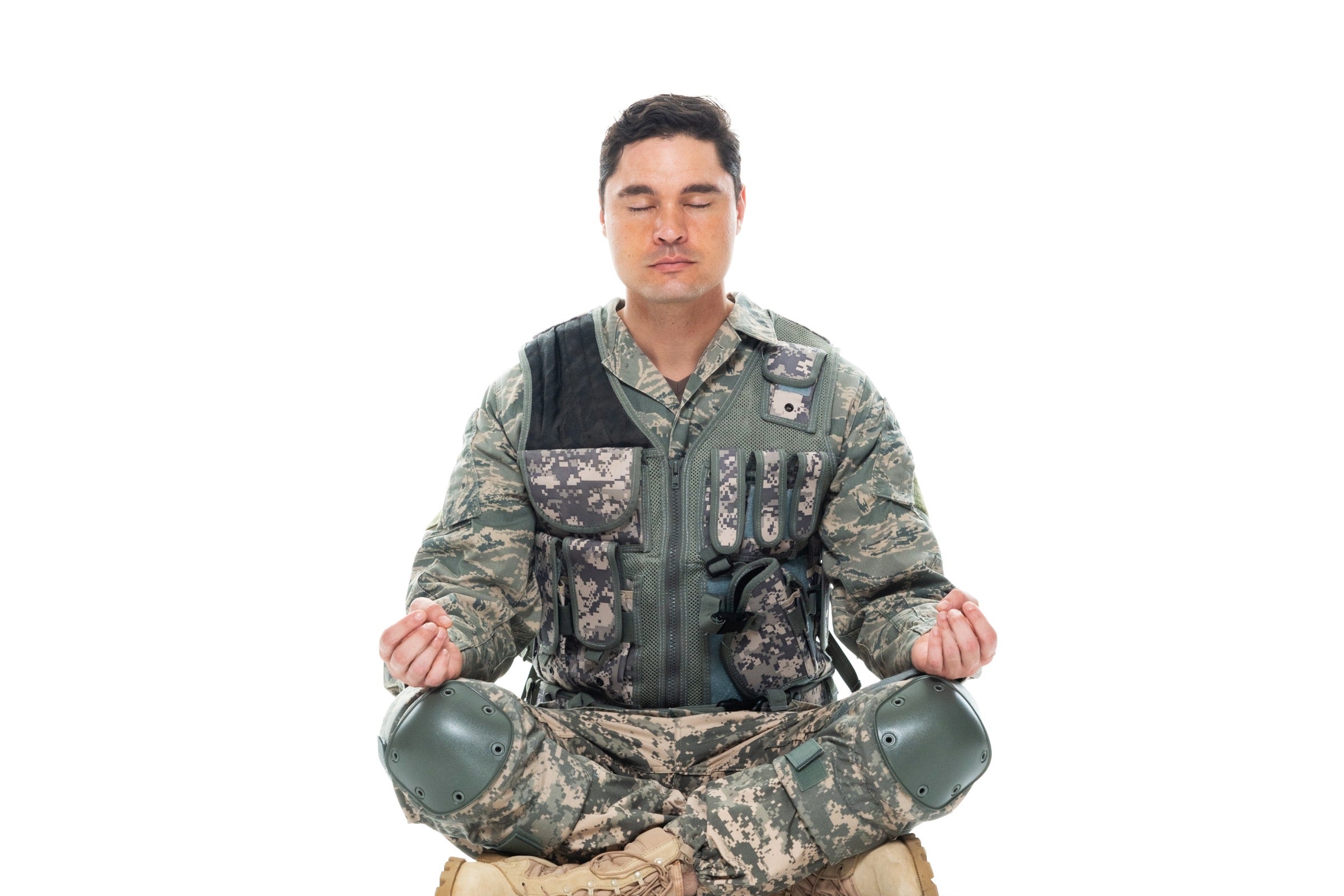Drop and Give Me Down Dog: Why the Army is Teaching Yoga to New Recruits

The army is studying whether or not warrior poses could make better warriors after putting hundreds of new recruits through daily yoga and meditation regimens in basic training.
The 10-week Holistic Health and Fitness System pilot program aims to see if the practices offer benefits to military recruits, as the service seeks ways to address declining recruit fitness. The yoga training aligned with the army’s new comprehensive health and fitness program—the service’s first overhaul of its fitness test in four decades. The program also seeks to reduce injuries, obesity, chronic sleep deprivation, and mental illness, an army statement said.
First Responder Yoga Can Offer Numerous Benefits
Olivia Mead, founder and CEO of Yoga For First Responders based in Castle Rock, Colorado, thinks the study is a step in a positive direction. She adds that the benefits of yoga for military personnel can expand far beyond the physical.
“First responders, including military personnel, are at a high risk of stress-based physical and mental health issues including alcoholism, sleep disorders, heart attack, post-traumatic stress, and suicide,” said Mead. “Yoga provides a proactive skill for training the nervous system to regulate before, during and after high stress encounters. It helps people to process the stress out of the physical tissues, balance hormones, and to effectively recover through mindfulness techniques. Training in yoga has shown to not only prevent stress-based health concerns, but to also build resilience and enhance performance on the job.”
A Rare Study on Yoga in the Military
Soldiers in 20 basic training platoons at Fort Jackson, South Carolina, practiced yoga and meditation daily to assess their effects on factors like physical performance, mental toughness, soldier discipline, injury rates, stress management, and graduation rates.
“We realized there’s growing scientific evidence that mindfulness and yoga have positive effects on individual holistic health and fitness,” said Major Kimberley Jordan, a doctor of physical therapy and the officer overseeing the program. “The basic combat training environment was rich in a variety of performance indicators that we could assess or analyze.”
The 1,800-participant study is one of the few studies on yoga in the military. It’s also one of the largest on mindfulness, Jordan said. Researchers are crunching numbers from data collected last fall. Final results should arrive later this year.
Preliminary Results Look Promising
Early feedback suggests improved endurance on ruck marches and obstacle courses, reduced pain during recovery periods, and better management of stress and homesickness, said Jordan, who’s used yoga herself for injury recovery and includes it in treatment for some of her patients.
While linked to Hindu and Buddhist traditions, the practices and poses taught were stripped of religious references, an approach some in the yoga community find problematic. Led by contracted trainers, half the trainees did yoga postures for 15 minutes before and after normal morning physical training exercises—poses like Downward-Facing Dog, Plank and Chair Pose.
They also received two hours of weekly instruction in mindfulness in the first four weeks and practiced meditation six days a week for 15 minutes before lights out. The control group platoons used standard Army preparation and recovery drills, such as windmill stretches, bend-and-reach moves, and push-ups. Both groups and their drill sergeants took several surveys to gauge their attitudes on the program.
“I started really enjoying and benefiting from the positions,” Pfc. Lina Alani said in the statement.
For example, she said, mindfulness practices came in handy when standing for long periods at attention or on ruck marches. The practices “really helped me focus on the task at hand.”
Building a More Mindful Basic Training
Trainees who did mindfulness training also showed signs of better behavior, said Sgt. 1st Class Desiree Strickland.
“They don’t argue,” the drill sergeant said. “They overall have more respect for themselves, each other, and for the drill sergeants.”
However, some participants said they would’ve rather used the time to prepare for other activities. Some of “the trainees looked discouraged or upset because they had to sit through 15 minutes of mindfulness,” said Staff Sergeant Angela Alvarez.
No additional cycles of the pilot program are on tap, Jordan said. However, the study’s results will help army officials decide whether or not to continue the use of yoga and mindfulness training.